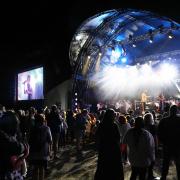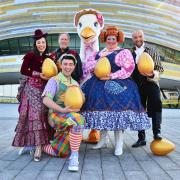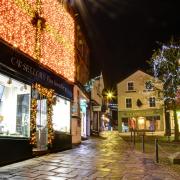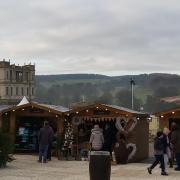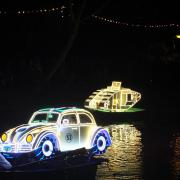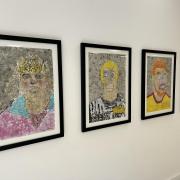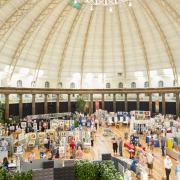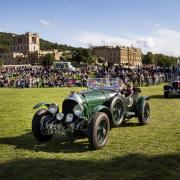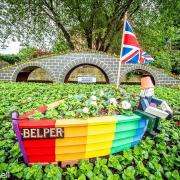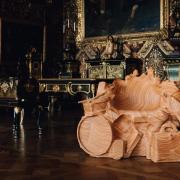Robert Falconer reports on the newly-refurbished Barrow Hill Roundhouse
After months of hard work and the completion of a £1.2 million restoration – made possible by National Lottery players – the new-look Barrow Hill Roundhouse was unveiled to the public on 21st September. Sir Peter Luff, Chairman of the Board of the National Heritage Memorial Fund and Heritage Lottery Fund, cut the ribbon to make the reopening official, and on hand to help with the celebrations were two railway icons: A3 Pacific No. 60103 ‘Flying Scotsman’ – the first locomotive to be recorded at 100mph; and A1 Pacific No. 60163 ‘Tornado’ – the most recent steam locomotive to be recorded at 100mph, a record it set earlier this year.
Built in 1870, Barrow Hill Roundhouse was just one of many such buildings around the country that housed and maintained our vast steam locomotive fleets but it is now the last surviving building of its kind still in use in Britain.
It was in 1998 that this building in the north-east corner of Derbyshire first opened to the public after being saved from demolition at the eleventh hour. The site had been modified when diesels replaced steam but when British Railways closed the shed in 1991, they planned to bulldoze the site. It was only thanks to a group of dedicated enthusiasts led by Mervyn Allcock, that the shed was saved, given Grade II listing, and the process of restoration was begun. Since then it has become a significant and unique part of our industrial heritage. However, despite its successful resurrection from dereliction and subsequent status as a mecca for railway enthusiasts from all corners of the country, major repairs to the infrastructure and new facilities to cater for the 21st century visitor were necessary to secure its future.
The latest restoration work started in March 2016 when the Roundhouse was awarded £1.2 million from the Heritage Lottery Fund for its ‘Moving Forward’ Project. The overall aim of the project is to broaden the Roundhouse’s audience to include families, a range of learners, the local community and corporate use. Essential repairs to the fabric of the building, such as masonry and the roof, were needed to keep the building safe, and a new enticing but sympathetic entrance has been built with a glass front. Inside there is a new café and seating area, toilet facilities and a new shop area. Facilities for educational and corporate use have been upgraded, a Learning & Access Officer recruited and a new learning programme developed, and access to the site and collections has been improved, bringing it to life with new interpretation features. A Volunteer Co-ordinator has also been recruited, providing heritage skills, training and apprenticeships and developing a programme of events and activities. Various museum areas have been created to show artefacts and tell the story of the major part Derbyshire played in the Industrial Revolution and the building of modern Britain. In addition to the important role our heritage plays at the Roundhouse, there is also a major focus on modern commercial activities with a number of commercial rail companies, such as Network Rail, Freightliner, Colas, Hitachi and NewRail (a railway research facility affiliated to Newcastle University), now basing activities at Barrow Hill.
Following the official opening event, the Roundhouse staged a three-day celebration gala. ‘Flying Scotsman’ and ‘Tornado’ gave rides to the thousands of people who flocked to the regenerated Roundhouse. The last time ‘Flying Scotsman’ had visited the shed was for a BR Open Day in 1974, and another visitor for the event was Jinty No. 47406, which is based at the Great Central Railway. Alongside the main opening gala, there was also a performance of Down the Line, supported by The Arts Council. The play was staged by a cast of professional actors alongside hundreds of local people, including a community choir and Ireland Colliery Chesterfield Brass Band, and there was a special guest appearance in the finale by ‘Flying Scotsman’.
In his opening speech, Sir Peter Luff said: ‘As the last surviving operational roundhouse, Barrow Hill has a unique role in telling the evocative story of the UK’s dazzling railway heritage. There’s no better way to learn about this history than getting close to the buildings and locomotives that survive from that time, and that combination is what makes this place so special. That’s why I’m really excited to open the new extension, and see the finished restoration, all made possible thanks to National Lottery players.’
Barrow Hill Roundhouse is now fully equipped for the future and we can look forward to many more years both of exploring our railway heritage in uniquely atmospheric surroundings and of enjoying new events like the railway galas, music concerts and beer festivals that proved so memorable in the past. History in the making!






